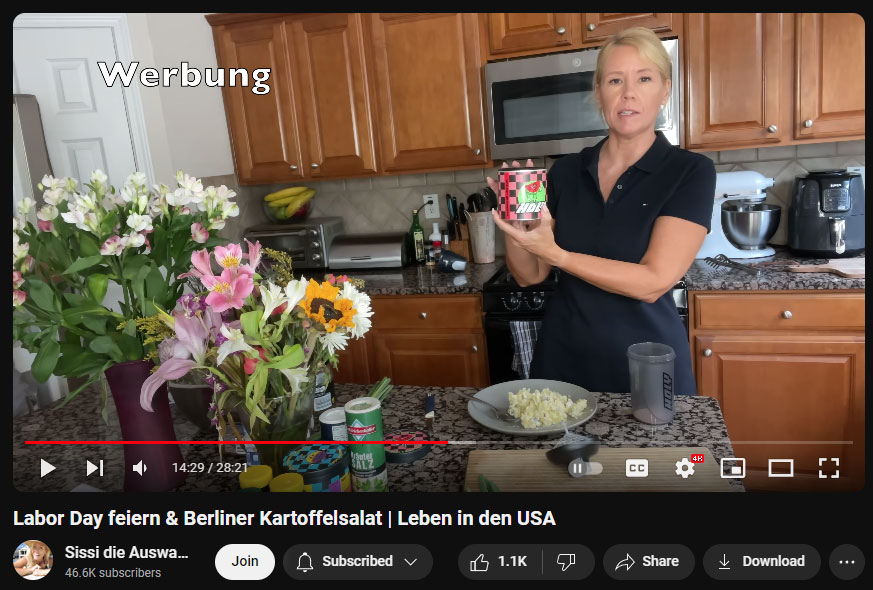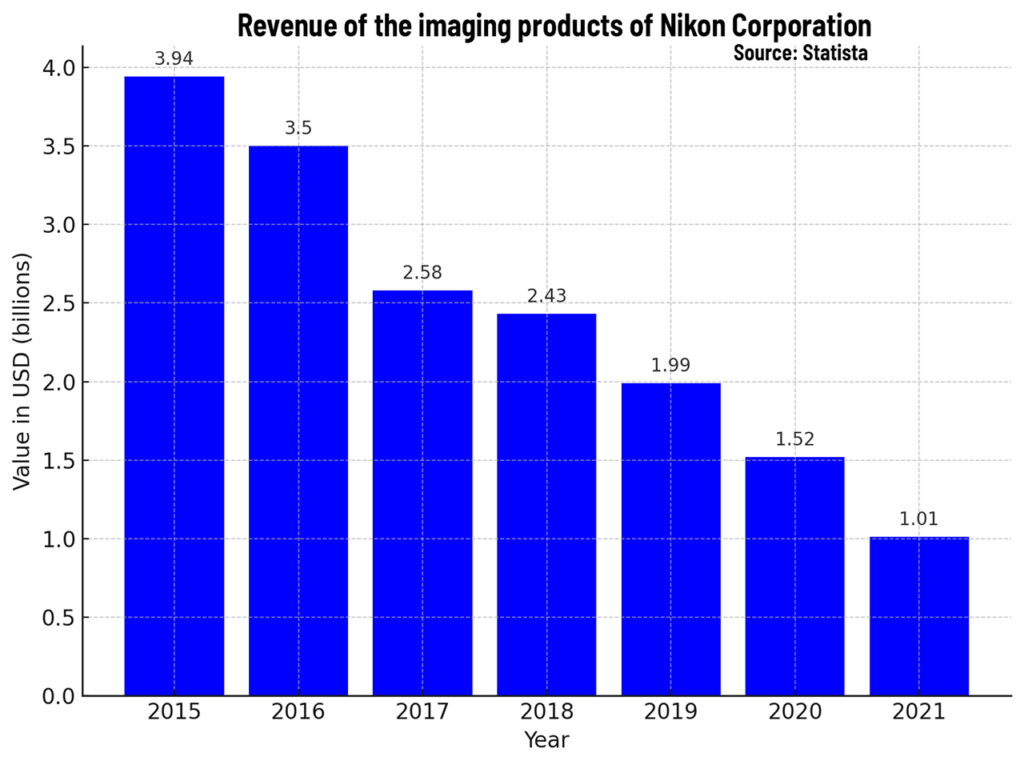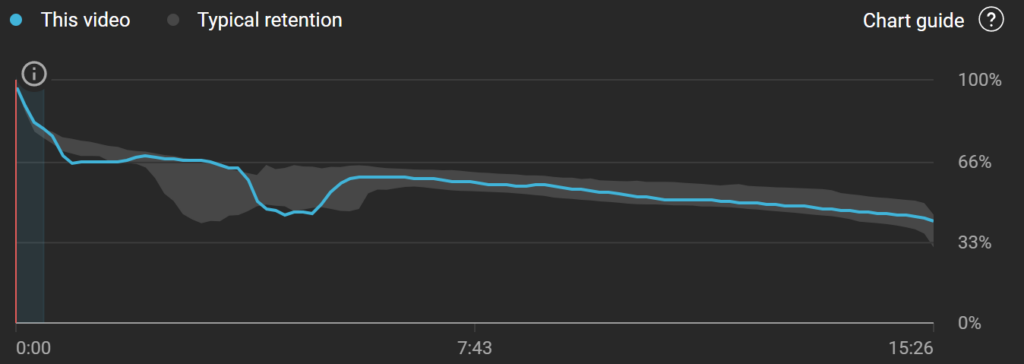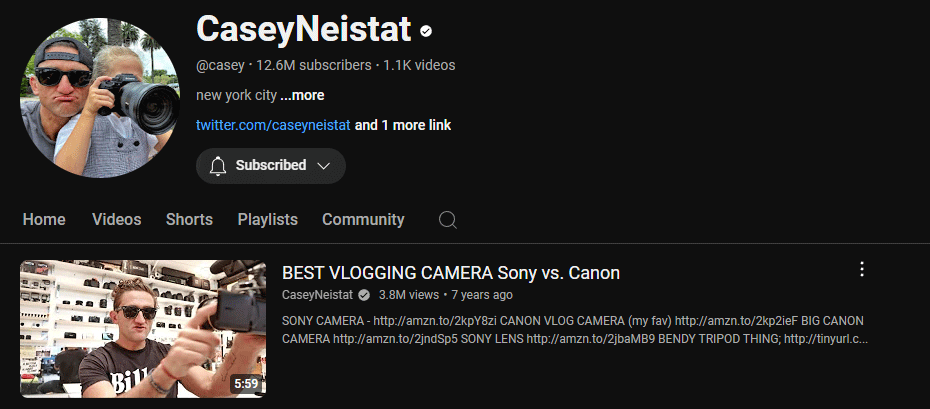| Thank you for Signing Up |


Influencer Branding Strategy
This approach focuses on spreading brand awareness rather than driving immediate sales through the influencer’s call-to-action (CTA). The goal is to establish the brand name within a specific market. For example, if you’re launching a new energy drink called “Holy,” the aim might be to ensure the brand is widely recognized. This strategy was successfully employed by the real-life energy drink brand “Holy” in Germany — a small company that was launched by a couple young folks from their living room! However, by partnering with a large number of influencers to simply talk about the product, the brand quickly gained recognition and is now mentioned alongside major players like “Red Bull.”
Succesful Influencer marketing of the energy drink manufacturer “Holy” with nano influencers.
In this strategy, immediate sales figures from influencer promotions aren’t the primary metric of success. Instead, the focus is on long-term brand recognition and creating a large, engaged consumer base. The resulting after-sales from millions of new potential customers far outweigh the costs of influencer partnerships, making this approach highly valuable for sales afterwards.
In fact, brand marketing through influencers is often far more effective than conversion-driven campaigns. Branding strategies build a larger, more engaged audience and lead to sustained, long-term success.
Two companies that exemplify this approach are DJI and Insta360, both of which were virtually unknown in their respective markets before using influencer marketing to catapult their brands into prominence.
DJI entered the drone market by investing millions in influencer marketing at a time when they had little to no recognition. Similarly, Insta360, a once-unknown manufacturer of 360-degree action cameras, rose to industry prominence by giving away thousands of free devices to influencers, paying them to promote the product without any conversion-focused CTA. These brands didn’t focus on immediate sales but instead leveraged influencers to build powerful brand awareness, transforming themselves into market leaders.
Major companies have also used influencer marketing to outmaneuver their competition. Canon, for example, became a leading brand among video creators worldwide by giving cameras to massive influencers like Casey Neistat, positioning him as a brand ambassador.
Sony followed suit, executing successful campaigns for their mirrorless cameras, and is now poised to surpass Canon in market share.
On the other hand, Nikon failed to recognize the power of influencer branding. Instead of engaging with influencers, Nikon focused on traditional product placement in Hollywood films.
Product Placement of Nikon in the Superman Movie “Man of Steel”
Thus, Nikon dismissed the idea of giving away free products or paying influencers. This misstep led to a sharp decline in their revenue — from $4.12 billion in 2015 to just $1.05 billion in 2021, a 75% drop.

Today in 2025, Nikon is seen as irrelevant among social media creators, who have become the dominant force in the digital camera market.
Conversion-Driven Influencer Marketing
This strategy focuses on driving immediate sales by placing a call-to-action (CTA) in the description of a YouTube video where the influencer advertises the product. The goal is typically to at least break even with the cost of booking the video, while generating enough sales to make the investment worthwhile.
While not as impactful for long-term brand building as a branding-focused strategy, conversion-driven influencer marketing can still be effective. Many companies find success, gaining traction and making a profit, often surpassing their break-even point. This approach is particularly valuable for smaller businesses looking for quick sales and short-term results, providing a viable option for those seeking immediate returns on their marketing investment.
This approach is a powerful tool nevertheless, often surprising companies with how well an influencer’s audience responds to the advertised products. Numerous articles and research have highlighted the success of this method, emphasizing the trust influencers have built with their followers. When an influencer promotes a product, their audience is more likely to engage and make purchases because they view the influencer as a trusted source of inspiration. This deep connection between influencers and their audience is a key driver behind the success of conversion-driven marketing.
In this article, I’ll explain later below how to create a successful conversion-driven influencer marketing strategy by creating an effective CTA and Landing Page.
Should You Hire an Agency or DIY for Influencer Marketing?
Influencer agencies are professionals in term of communications because their primary role involves managing influencers on a daily basis. Engaging with influencers presents unique challenges, as the traditional business-to-business (B2B) communication methods cannot be applied directly on an influencer. When working with an influencer, you’re not just collaborating with a creative professional; you’re interacting with someone who wields significant influence over their audience. Mishandling this relationship can have severe consequences for your brand. If an influencer feels disrespected or treated unfairly, they have the power to tarnish your reputation publicly.
Relying on contracts or NDAs to prevent influencers from damaging your reputation offers little real protection. While these legal documents may include clauses intended to prevent negative public comments, they are often ineffective. Influencers, particularly those based in the U.S., are protected by free speech laws, making such clauses potentially null and void. Furthermore, attempting to sue an influencer can backfire, especially with laws like SLAPP (Strategic Lawsuits Against Public Participation) designed to prevent frivolous lawsuits. These counterclaims could result in your company facing millions in punitive damages.
Pursuing legal action against an influencer is almost always a losing strategy. Not only are you unlikely to succeed, but the influencer will likely take the conflict public, rallying their followers against your brand. In this situation, the damage to your reputation could be far greater than the initial issue. Developing strong conflict-resolution skills is essential when working with influencers, as resolving disputes diplomatically is far more effective than resorting to legal threats.
Although influencers may be working for your brand, they are not like typical freelancers such for example as graphic designers or consultants. You cannot simply assign tasks and move on. The influencer holds considerable leverage, and any missteps could result in a very public fallout. This makes working with influencers a delicate task that demands careful handling.
For these reasons, partnering with an influencer agency is crucial. These agencies specialize in managing these creative individuals, who can sometimes be challenging to work with—think of them as artists, with all the complexities that entails. If you’ve found working with engineers difficult, be prepared for even greater challenges when managing influencers. My advice: think carefully before taking on the responsibility of handling an influencer relationship on your own.
Influencer Contracts 101: Aligning with Industry Standards for Success
When working with influencers, it’s essential to craft a contract that the influencer views as fair and aligned with industry standards. Unrealistic demands, such as asking an influencer to dedicate an entire video or include lengthy segments about your brand, are likely to be met with frustration or outright rejection. Understanding and adhering to the norms within the influencer marketing industry is critical to establishing a successful partnership.
Below are a few important points to consider when creating a contract with an influencer:
Video Integration Times
The standard duration for brand integrations in videos is typically 60-90 seconds. Expecting anything significantly longer may be unreasonable.
One of the key reasons to avoid asking an influencer to place an ad longer than 90 seconds is tied to typical viewer retention rates.
Our extensive experience has shown that the bounce rate for ads remains consistent, regardless of how well they are designed or positioned. Viewers who are inclined to watch an ad will do so; those who want to skip it will fast forward, regardless. Below, you’ll find a common example of video retention rates, showing how viewers tend to skip over the ad portion.

When comparing this data across our YouTube partners, we observe that retention rates are consistently similar. By requesting an ad longer than 90 seconds, you’re effectively asking the influencer to take a bigger hit on their retention rate. The higher and longer the retention drop, the less likely the YouTube algorithm is to promote the video, meaning your ad will reach fewer viewers. This not only harms the influencer’s channel but also reduces the visibility of your ad.
The optimal integration for an ad is around 60 seconds, which allows the creator to present the product with wit, creativity, and engagement. While this ideal may not always be feasible, a 90-second ad is the upper limit of what can still be effective. Anything longer risks diminishing the video’s success — and your own.
Placement Within the Video
Ideally, the integration should appear within the first 5 minutes or the first third of the video. However, influencers may structure their content differently, incorporating cliffhangers or other creative elements. Be flexible if the influencer has a unique approach that could benefit your brand, even if the timing isn’t exactly as you expected.
Ad placements that require your Creator to include your video at the beginning or within the first two minutes of their content are generally seen as unprofessional for several reasons. First, YouTube already places ads at the start of videos, so having your ad appear immediately afterward can frustrate viewers. Second, prioritizing your own gain over the influencer’s relationship with their audience reflects a one-sided approach. A successful ad campaign should prioritize collaboration, ensuring the influencer’s connection with their audience remains intact. These tactics not only risk damaging your relationship with the influencer, but also negatively impact how your ad is perceived by viewers.
Integration Types
One of the main questions Influencer Agencies and Brands face is how to smoothly integrate sponsored ads into their videos. Should the video align with the product’s theme? How can the ad be introduced without disrupting the viewer’s experience?
Based on extensive experience and backed by analytics, we offer the following recommendations:
First, as mentioned earlier, some viewers tend to skip the ad section, as shown in the retention rate graph above. We’ve experimented with everything — from smooth transitions to videos perfectly tailored to the product — but the retention rate consistently remained the same. Basically, no matter how well the ad is integrated, a similar percentage of viewers will skip forward. In short, you can’t change ad-skipping behavior with integration techniques.
However, what we did find is that the number of likes and feedback varies depending on how the ad is presented. For instance, when we integrated the ad into the video with a thematic approach — such as saying, “Speaking of speaking languages, that reminds me of ELSA, my sponsor…” — we received more negative feedback. This suggests that viewers expect authenticity on social media and view forced or artificial transitions as intrusive.
We’ve also had particularly poor results with videos that match the advertised product too closely. In these cases, viewers often accuse us of creating the video solely to promote the product, sometimes labeling the entire video as one big ad.
Our current best practice is to introduce the ad at a pivotal moment in the video, such as during a cliffhanger. This way, the ad appears when the viewer is already motivated to continue watching. Especially if the creator builds tension, curiosity, and interest in the first 3-4 minutes, the audience is more likely to engage positively and watch the video through to the end.
In conclusion, it’s more effective to present the ad openly rather than trying to disguise it with transitions. A straightforward approach, like saying “allow me to quickly thank today’s sponsor,” tends to work best.
Revisions
Handle requests for revisions with care. Video production involves multiple complex elements — writing, filming, studio & setup involving light and camera technology, sound design, and editing — making it one of the most demanding forms of content creation. Unless there’s a major issue, avoid asking for significant changes. A reasonable approach is to include a maximum of two revisions in the contract, but ideally, revisions should not be asked. Rather than requesting multiple revisions, provide clear video material, concise and well-structured briefs, and examples of successful ads from other YouTubers. If the ad doesn’t meet your expectations, ask the influencer to make adjustments in their next integration.
Unless it’s a small revision, like changing a word or an image, you should be good to go. However, if you’re asking for major revisions, don’t expect drastically better results. Creators have their own unique style, and they can’t easily adapt to fit a different vision. Keep in mind, creators aren’t video agencies with large teams of creative minds—they typically work solo, and what you see is what they can offer.
Instead of requesting constant revisions, it’s often better to move on and collaborate with other influencers. Be mindful of how you handle this—some influencers can be sensitive, and they have large audiences to voice their frustrations to, which is the last thing you want as a brand.
The best approach is to politely let the influencer know that you’re exploring other advertising avenues for now and thank them for the great work they’ve done.
Email Response Times
Influencers often create content on short notice, so providing feedback quickly is crucial. A response window of no more than two days is standard. Expecting influencers to produce videos weeks in advance is generally unrealistic and can lead to issues. Let me explain what that is:
It’s common for influencers to struggle with producing content in advance because YouTube basically requires them to publish on a weekly basis, or even more frequently. Some creators are forced to release videos 2-3 times per week, making YouTube one of the most stressful platforms for creators.
YouTube pressures creators by reducing viewership and promoting their videos less frequently, a practice that has been a long-standing topic of concern among YouTubers. This unspoken form of punishment is regularly discussed within the community and is even communicated to creators through their own Creator Channels, which address YouTubers directly. The message is clear: if Creators stop publishing consistently, they will face consequences in terms of visibility and therefore AdSense money.
Burnout is prevalent among YouTubers, and many have had to step away from the platform due to the immense pressure to keep up with such demanding publishing cycles. Unlike media producers, such as documentary filmmakers or directors, who have months or even years to complete their work, YouTubers are expected to deliver high-quality content within days. Many creators work long hours with very little sleep just to maintain their channel’s success.
Given this, it’s important to show consideration for the creator’s situation. The integration you’re expecting might only be finalized a few days before the video’s release, as creators often work on their content right up until the deadline. It’s unrealistic to expect them to provide the final product weeks in advance. The industry standard for influencer agencies is to request the content two days before release and, in return, offer feedback within a day or two.
Click-Guarantees
Some influencers may offer guarantees based on consistent performance. For example, an influencer who consistently achieves 30K views per video might agree to a 30K-view guarantee. If the target isn’t met, they may offer a “make-good” video featuring another ad at a later date. However, be cautious with these requests — most influencers are unlikely to provide such guarantees, and pushing for one can strain the relationship. To mitigate the risk of underperforming videos, it’s often better to book multiple videos, spreading the potential for reach and engagement across several campaigns.
CTA Placement
It’s standard practice to request that an influencer include your call-to-action (CTA) at the top of their video description and also pin a comment with the CTA to ensure it remains visible.
Sponsored Ad Watermark
It’s unreasonable and legally risky to ask the influencer to hide the fact that the content includes an ad integration. Doing so violates YouTube’s guidelines, could lead to the influencer being banned from the platform, and is illegal under various laws:
- Federal U.S. Law: FTC: Endorsements, Influencers, and Reviews; FTC: Consumer Review Fairness Act
- EU Law: EU Directive 89/552-EEC
- Google’s Guidelines: Paid product placements, sponsorships & endorsements
To ensure compliance, it’s best to include a clause in the contract requiring the influencer to clearly mark the video as “Sponsored.” This not only adheres to the rules but also fosters transparency with the audience, which builds trust
The Power of Consistency
Influencers have little control over which of their videos will become successful or go viral. Every video they create is a hopeful attempt at gaining traction, filled with the aspiration that it will be the one to take off. Influencers invest a great deal of time and effort researching their audience’s preferences. They analyze data, export CSV files from their YouTube Studio dashboard, create pivot tables, and read through tens of thousands of comments. They also conduct competitive research, comparing their strategies with other successful YouTubers to better understand what drives engagement.
In addition, influencers regularly connect with their peers to exchange insights, and many stay updated by following YouTube’s creator channels for the latest platform trends and guidelines. One excellent example of how much research and analysis goes into YouTube success is highlighted in Jenny Hoyos’ interview, where she breaks down the complexities of audience analytics and content strategy:
However, despite all this effort, the bottleneck lies with YouTube itself. Factors such as the ever-evolving algorithm, the timing of the video’s release, and the broader video landscape at that moment can all affect reach. A video’s success can hinge on external events, like breaking news, which may shift viewer attention elsewhere. Additionally, given the volume of content uploaded to YouTube — over 500 hours of video every minute — an influencer cannot predict whether the landscape will be favorable when their video goes live.
With so many variables, it’s unreasonable to ask an influencer to guarantee that your ad will be placed in their most popular video. Instead, it’s more practical to approach influencer marketing with a longer-term mindset. Investing in multiple campaigns rather than a single video will increase your chances of success. Booking at least two or more videos in advance offers greater security and allows for a more comprehensive strategy with the influencer.
The Importance of Long-Term Relationships with YouTubers for Sustainable Ad Success
One crucial aspect of achieving consistency and long-term success is maintaining an ongoing relationship with YouTubers.
Because YouTube’s editing features allow creators to remove sections of their videos — including sponsored ads — at any time. Without a sustained partnership, your ad integration may eventually disappear, losing its potential to drive traffic and conversions.
This is especially significant when considering the enduring value of evergreen content. Many YouTubers create videos that continue to attract viewers years after their initial upload. Some older videos even experience unexpected surges in clicks, going viral long after publication. Ads integrated into these videos can deliver meaningful traffic and conversions years down the line.
When brands cultivate strong, ongoing relationships with influencers, YouTubers are less likely to delete older sponsored segments. These partnerships become mutually beneficial, as creators aim to demonstrate the value of collaboration by maximizing conversions and maintaining trust with their brand partners.
Conversely, when a partnership ends, there’s little incentive for influencers to keep outdated ads, especially since those segments negatively affect the retention rate and thus the video performance. Removing ads often boosts the video’s visibility and reach, aligning with the influencer’s own goals for growth.
Some may assume that contracts mandating the indefinite preservation of ad integrations offer a solution. However, this approach faces two significant challenges:
- Legal Limitations
No agreement can force a creator to keep an advertisement in their content indefinitely. Courts typically uphold only reasonable timeframes for ad placements, such as six months to a year, as indefinite clauses are deemed unfair or unenforceable. Many influencer agreements already account for this, specifying limited ad durations to avoid legal disputes. - Reputation Risks
Engaging in legal battles with influencers can lead to public fallout and damage your brand’s reputation. Even if a company wins in court, the negative publicity could outweigh the benefits, especially when dealing with creators who have loyal audiences and significant reach.
For these reasons, building and maintaining long-term relationships with YouTubers is a far more effective strategy.
Over time, this approach can result in dozens — even hundreds — of ads across a creator’s channel, consistently driving traffic and conversions.
With ongoing collaborations, brands not only protect their investments but also ensure their ads thrive as part of the creator’s broader content ecosystem.
How to create the best CTA
In our earlier discussion above of conversion-driven influencer marketing as a secondary strategy, I will reveal in this chapter how to focus on the key success factors. One of the most critical elements is the CTA, though many companies struggle with getting it right. The CTA serves as a direct link to the landing page where the audience can purchase the product. For example:
Get 15% off [Product Name] with your first purchase at [URL] using the code “[CODE]”.
I often see companies making this mistake, and I have to remind them that research shows user attention spans are shorter than ever. A lengthy CTA decreases the likelihood that someone will click on it. The goal of the CTA is not to retell the story already conveyed in the video. At this point, the audience is already interested — now they just need a clear, simple link to click on. Avoid cluttering the message with unnecessary details that could confuse potential buyers.
In some cases, influencers may suggest a CTA of their own. Be open to their input — they know their audience better than anyone. As mentioned above, influencers put a significant amount of effort into analyzing their audience data and understanding what drives engagement. Trust their expertise when it comes to crafting a CTA that will resonate with their followers.
Many influencer videos are evergreen, meaning they continue to gain traction long after their initial go-live. When working with these types of videos, it’s crucial to avoid including deals or links to products that expire. Ensure the links remain active and that the products are available for purchase, even years after the campaign’s launch. Many successful influencers have videos that initially receive lower engagement but later, often unexpectedly, YouTube’s algorithm starts promoting them, leading to a surge in views. It’s not uncommon for a video that starts with 20-30K clicks to suddenly skyrocket to millions of views years after its release.
This phenomenon is driven by the constantly shifting video landscape, where current events, seasonality, and other videos published around the same time affect YouTube’s algorithm on an hourly basis. Everything can change quickly, and you don’t want to miss the moment when an old CTA suddenly attracts millions of clicks, only for it to no longer work.
For this reason, it’s important to avoid seasonal or time-limited offers, such as specifying an expiration date for a discount. I also strongly discourage companies from relying on time-bound deals in general. Everything you incorporate into a YouTube video should be evergreen and timeless.
Crafting the Perfect Landing Page for Maximum CTA Impact
As we delve into conversion-driven CTAs, there’s one key factor that can make or break your success: the Landing Page. If you’re aiming to drive sales, you need to get this element right, or you risk losing potential buyers. The Landing Page is where users land after clicking your CTA, and its effectiveness is critical to turning interest into action. I’ve previously covered the importance of landing pages in my article, “Importance of Landing Pages in SEM/SEO“, and I encourage you to read that for a broader perspective. For now, let’s focus on what makes a perfect landing page specifically for a YouTube audience.
- Meeting Audience Expectations
Your landing page must mirror the promises made by the influencer. Whatever the influencer communicated about the product or deal, the Landing Page should align exactly with those expectations. Never redirect users to a homepage or a generic page where they have to hunt for the advertised product. The deal, bundles, and product features should be presented front and center —delivered on a silver platter. - Influencer Branding
Whenever possible, incorporate the influencer’s branding — logo, name, or image — on the landing page. A great example is CyberGhostVPN’s CTA Landing Page, which prominently features the influencer who promoted their product. Since you’ve paid the influencer to represent your brand, using their name and image is a powerful trust signal. Neglecting this is a missed opportunity to capitalize on the credibility they’ve built with their audience. - Trust Elements
Astonishingly, many companies overlook essential trust elements on their landing pages. These are crucial for building confidence in your brand beyond the influencer’s endorsement. Incorporate badges like “30-Day Money-Back Guarantee,” “40 Years in Business,” or “ISO Certified.” Social proof, such as “40 million customers worldwide” or “99.8% accuracy,” and things like these are vital. Don’t shy away from prominently displaying these elements, and be sure to include customer reviews. Anything that adds credibility and aligns with your product’s values should be featured. - FAQs
FAQs are indispensable for answering common questions that may arise before a customer decides to buy. Include answers to questions like, “How does the 30-day money-back guarantee work?” or “Who is behind this company?” Tailor the FAQs to address any hesitations your potential buyers might have. Providing clear, upfront answers fosters trust and can help turn curiosity into conversions. - Long-Scrolling Page
In today’s online landscape, don’t shy away from designing a long-scrolling landing page. You want to avoid the scenario where a user reaches the bottom of the page—because we all know what happens next: they simply click away. Instead, keep users engaged by offering more interaction points throughout the page. Incorporate multiple CTAs between sections like FAQs and reviews to keep the purchase option top of mind.When they do reach the bottom, don’t let it be the end—offer featured products, similar items, best-sellers, or product categories. If available, include links to relevant blog articles or additional content to further engage them. The longer users stay on the page, the more familiar they become with your brand’s colors, products, and message, instinctively building trust. A long-scrolling page is an essential tactic in online marketing, ensuring continuous engagement and increasing the likelihood of conversion.
| Thank you for Signing Up |



 by
by 





